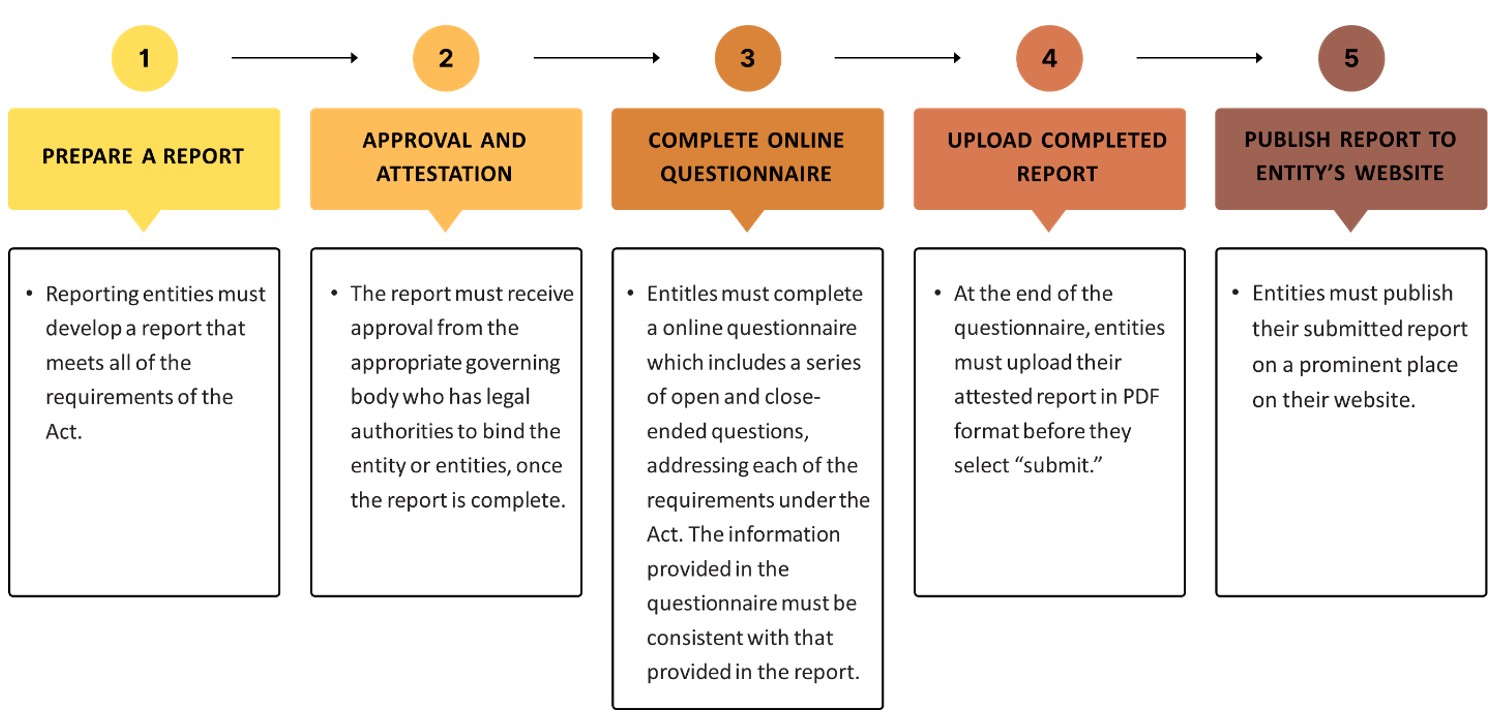Late last week, the Government of Canada released Guidance to assist companies in complying with the new Fighting Against Forced Labour and Child Labour in Supply Chains Act, which we have previously reported on here. We have also previously provided a FAQ addressing each of the key elements, here. In those posts, we highlight new information that may be of interest but have not reproduced the details of the Guidance here.
The Government’s new Guidance is welcome insight that will allow companies to more accurately determine (1) whether they will be required to complete and file the report, (2) what to include in the report and what information will be accepted, and (3) how to package the report and make it available to the public.
The Guidance sets out the following step-by-step guide to comply with the requirement. A reporting entity must complete the following steps ahead of the May 31, 2024 deadline:

Release of Questionnaire
Of interest, the Government of Canada has published an online questionnaire that is mandatory but may also assist in the preparation of the report itself. The questionnaire directs companies to answer specific questions about their business which reflect many of the report’s legislative content requirements. The online questionnaire is available here.
Filing of a Joint Report
The Guidance explains that companies with multiple legal entities may file a single joint report covering all such entities at once. This reduces the administrative burden of preparing multiple reports if more than one legal entity is required to file a report. Having said that, joint reports should only be filed where the covered entities share the same risk profiles and policies/actions taken to address the risks in their supply chains.
Approval/Attestation of the Report
The Guidance provides specific language and format for the required attestation required from the reporting company’s governing body. Companies should not deviate from that language without good reason.
Official Languages
The Guidance recommends that the report be prepared and filed in both English and French. Importantly, this is only a recommendation and is not a requirement. Having said that, requests for translated copies may be transmitted to the reporting companies if/when the requests are received.
Information Disclosed in Other Jurisdictions
It is also worth noting that the Guidance indicates that in many cases information prepared to comply with requirements in other jurisdictions (e.g., in the U.K. or Australia) will be accepted for the purposes of satisfying the Canadian requirements. That said, the reporting company bears the burden of ensuring that the information used in the Canadian report satisfies the Canadian requirements. It is therefore likely that the reporting company will not simply be able to submit the same report as the one to the other jurisdiction and will only be able to use certain parts of those reports to prepare the Canadian version. This can be a source of significant time and resource savings for any companies who have already filed reports in other jurisdictions.
Presumption of Risks
The Guidance is clear that no industry can be assumed to be entirely free of forced labour or child labour risks. The Government does not want companies to certify that they or their supply chains are “risk-free” but rather are asking companies to demonstrate steps they have taken to identify and address those risks. Some industries have higher risks than others and those higher risk industries should take greater care in preparing this report because it may have knock-on impacts on enforcement efforts in the future. However, even those industries without previously demonstrated risks of forced labour in their supply chains should take this report seriously.
